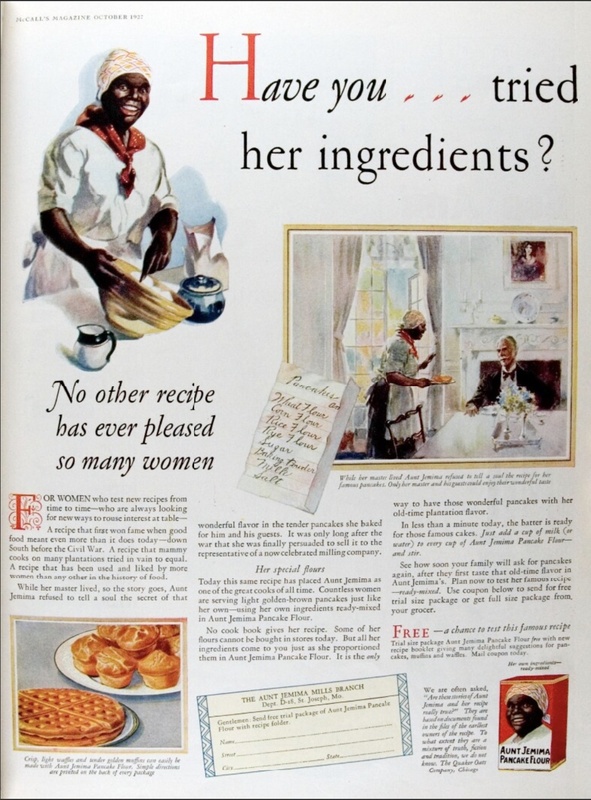African Americans in Advertising
As Jim Crow became a staple in American culture, it was important for White advertisers to connect to the social construct of racial hierarchy in their advertisements, linking the buying of the product to racial superiority. The commercializing of African Americans' likeness and slave past to products reassured many White consumers that some things would remain the same even during social change.
The mammy became the most prominent figure in advertising depicting African Americans. In 1889 Pearl Milling Company, known for their pancake mix, created Aunt Jemima, a large dark-skinned woman wearing a bandanna and an apron. Aunt Jemima is the most well-known image of the mammy, the Black woman who served White families and helped raise their children. She reinforced views of African American women as cooks, house servants, and nannies for White families. A box of Aunt Jemima pancakes in the home reminded many of the tradition of owning a Mammy.
B&G Foods based their logo for Cream of Wheat after chef Frank White. However, Rastus, a racial slur for Black men, is the known name of the smiling pinstripe suit-wearing chef who dons his chef's hat while ringing a breakfast bell. His image of a servant reminded people of the racial hierarchy. Advertising continued to push the narrative of Blacks as servants, cooks, and butlers, reminding Americans of the past and social placement of Blacks in America.



